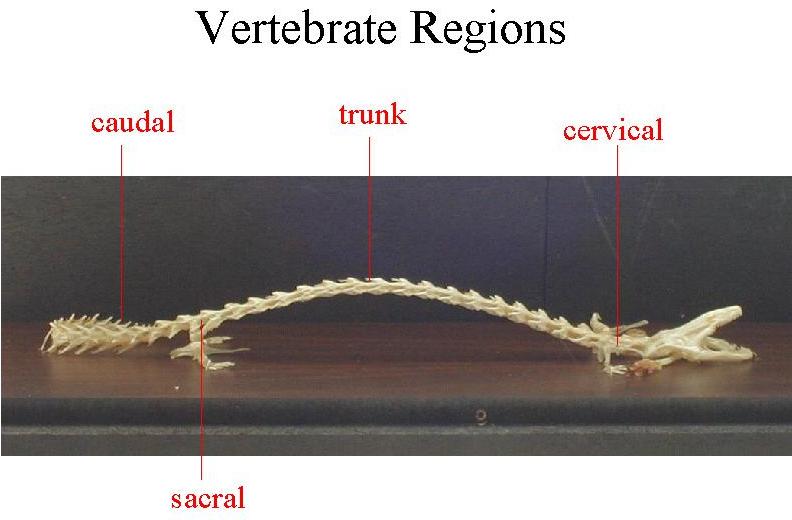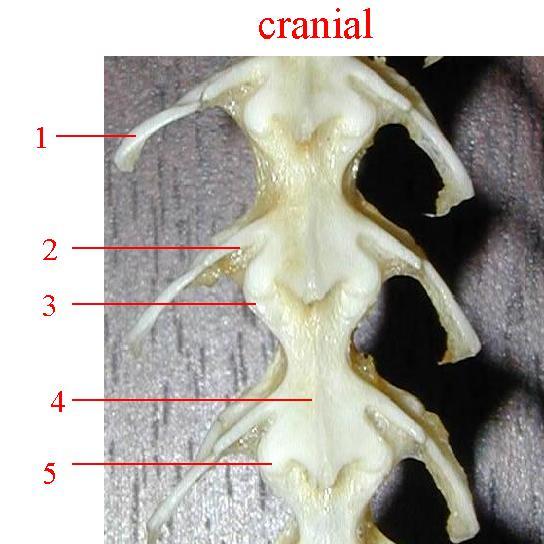Necturus Skull
The Necturus maculosus, mudpuppy, skull is
widely used as a representative of Class Amphibia, however, Necturus
is neotenic and still possesses some larval characteristics not seen in
other adult amphibians. These larval features should not be confused
with primitive adult characteristics. The
Necturus is a good
model for ancestral tetrapods because it has retained more of the primitive
features from its ancestors than mammals, but many fewer than other amphibians.
The chondrocranium, visceral skeleton, and dermal bones that are present
in the head region of fishes are also present in amphibians. However,
only three bones remain in the chondrocranium (exoccipital, opisthotic,
and prootic) and one in the visceral arches (quadrate). The remaining
bones of the skull are dermal in origin. Some other differences between
the Amia skull and the Necturus skull are the operculum found
in most teleosts is lost and the visceral arches are also greatly reduced.
The selection pressures toward these changes include the reduction of the
gills with the movement onto land and the formation of a neck. Likewise,
the trend throughout evolution towards a decrease in the number of bones
in the skull is seen in the Necturus skull. In the lower jaw,
there is a reduction of bone with only three dermal bones covering the
mandibular cartilage of Necturus. The lower jaw articulates
with the quadrate of the skull. Other tetrapodâs lower jaws
articulate with the squamosal bone of the skull to provide more strength
needed for the exploitation of food resources available on land.
The teeth of Necturus are small, conical and homodont, making them
essentially fishlike. Teeth can be found on the premaxilla, vomer,
and pterygoid bones of the upper jaw and the dentary, angular, and splenial
bones of the lower jaw.
Dorsal View

1 Premaxilla 2 Frontal 3 Vomer 4 Pterygoid 5 Quadrate 6 Squamosal 7 Opisthotic
Ventral View

1 Premaxilla 2 Vomer 3 Pterygoid 4 Quadrate 5 Prootic 6 Parasphenoid 7 Opisthotic
Lower Jaw

Necturus Axial Skeleton
With the movement to
land the vertebral column became more important in locomotion and in maintaining
posture. Thus, amphibians have more completely ossified vertebrae
than do fishes. Overlapping zygopophysis, which can be seen in the
Necturus skeleton, holds these vertebrae together. The postzygopophysis
of one vertebra lies on top of the prezygopophysis of the next. The
centrum shape of the Necturusâ vertebrae is amphicoelous,
the centrum on both sides of the vertebrae is concave. The arrangement
of the zygopophysis and the centrum shape allow for lateral bending but
prevent vertical bending. The movement from water onto land
was the primary factor in regional specialization of the axial skeleton
over evolutionary time. As the first terrestrial vertebrates lost
their gills and the bony connection between the skull and pectoral girdle
developed, the evolution of the neck began. The development of the
neck in early tetrapopds is due, in large part, to the introduction of
the cervical vertebrae, which allowed for increased mobility of the head.
This allowed them to scan the environment for predators and prey more easily.
The regional specialization continues with the development of the one sacral
vertebra, which is a modification to withstand the push against the earth.
The trunk vertebrae stretch between the cervical and sacral vertebrae and
serve as attachment sites for the ribs. The
Necturus ribs
are short, primitive ribs. The ribs do have two heads, the caput
and tuberculum, which continues to be seen in later vertebrates as well.
The last type of ribs seen on the
Necturus is the caudal vertebra,
which lack ribs and bear hemal arches as seen in Squalus.

Vertebrae (dorsal view)

1 Rib 2 Transverse process 3 Prezygapophyses 4 Vertebral arch 5 Postzygapophyses
Necturus Appendicular Skeleton
As evolution carried the vertebrate to land, the
fin was evolved into a more active limb. The forelimb consists of
three segments: the brachium (humerus), the antebrachium (radius
and ulna), and the manus (carpals, metacarpals, phalanges). The hindlimb
consists of the corresponding bones in the pelvic girdle: the os femoris
(femur), the shank or crus (tibia and fibula), and the pes (tarsals, metatarsals,
and phalanges). There are many homologies between vertebrate appendages.
There are four general characteristics that transcend the vertebrae appendicular
skeleton: all bones are single and proximal, there are two distal
bones, phalanges are present, and the same basic joints exist. As
these appendages became more important, the girdles became bigger and stronger.
Since the
Necturus is neotenic, many parts of its girdles are unossified.
Therefore, the basic plan of the appendicular skeleton shows very little
change from Sarcopterygians because the
Necturusâ body is
still on the ground. However, the basic plan and shape is representative
of early terrestrial vertebrates. In early amphibians and reptiles,
the humerus and femur extend laterally and are held horizontally from the
ground when the animal moves. The distal part of the limbs is held
vertically to the ground.
Pectoral Girdle

1 Ulna 2 Radius 3 Metacarpals
4
Phalanges 5 Procoracoid process 6 Trunk vertebrae
Pelvic Girdle

1 Fibula 2 Tibia 3 Femur 4 Puboischiadic 5 Ilium